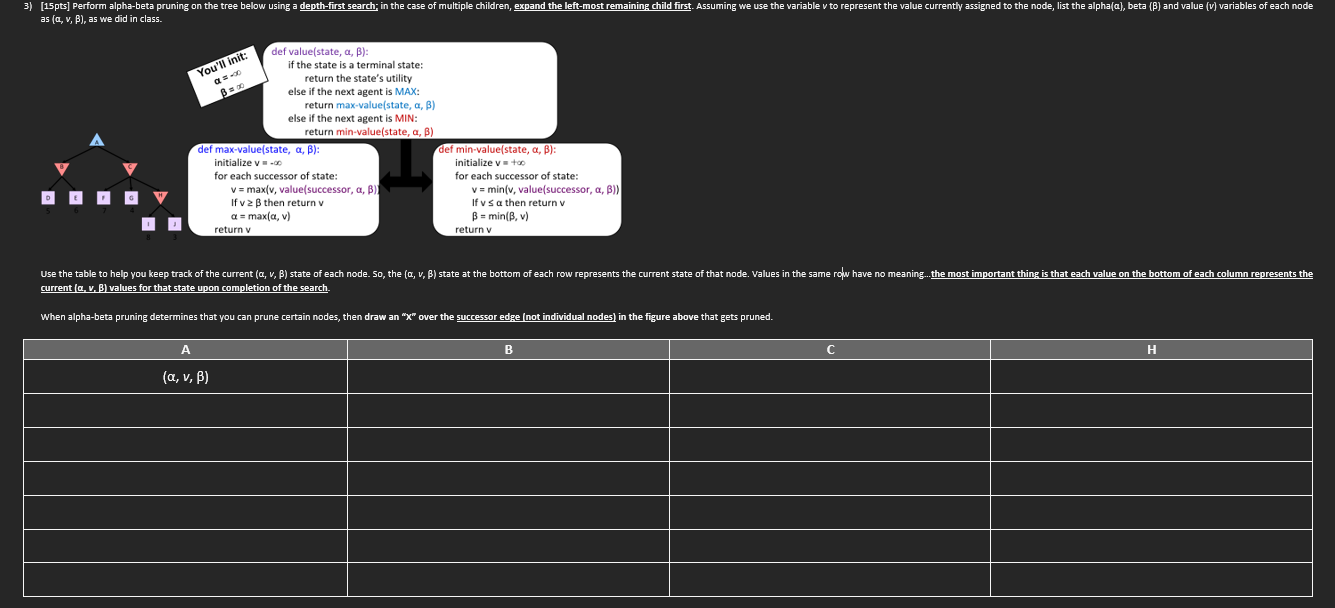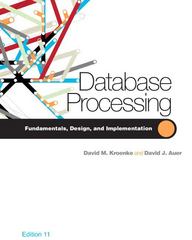Answered step by step
Verified Expert Solution
Question
1 Approved Answer
Perform alpha - beta pruning on the tree below using a depth - first search; in the case of multiple children, expand the left -
Perform alphabeta pruning on the tree below using a depthfirst search; in the case of multiple children, expand the leftmost remaining child first. Assuming we use the variable v to represent the value currently assigned to the node, list the alphaalpha beta beta and value v variables of each node as alpha vbeta Use the table to help you keep track of the current alpha vbeta state of each node. So the alpha vbeta state at the bottom of each row represents the current state of that node. Values in the same row have no meaning...the most important thing is that each value on the bottom of each column represents the current alpha vbeta values for that state upon completion of the search.
When alphabeta pruning determines that you can prune certain nodes, then draw an X over the successor edge not individual nodes in the figure above that gets pruned.

Step by Step Solution
There are 3 Steps involved in it
Step: 1

Get Instant Access to Expert-Tailored Solutions
See step-by-step solutions with expert insights and AI powered tools for academic success
Step: 2

Step: 3

Ace Your Homework with AI
Get the answers you need in no time with our AI-driven, step-by-step assistance
Get Started


